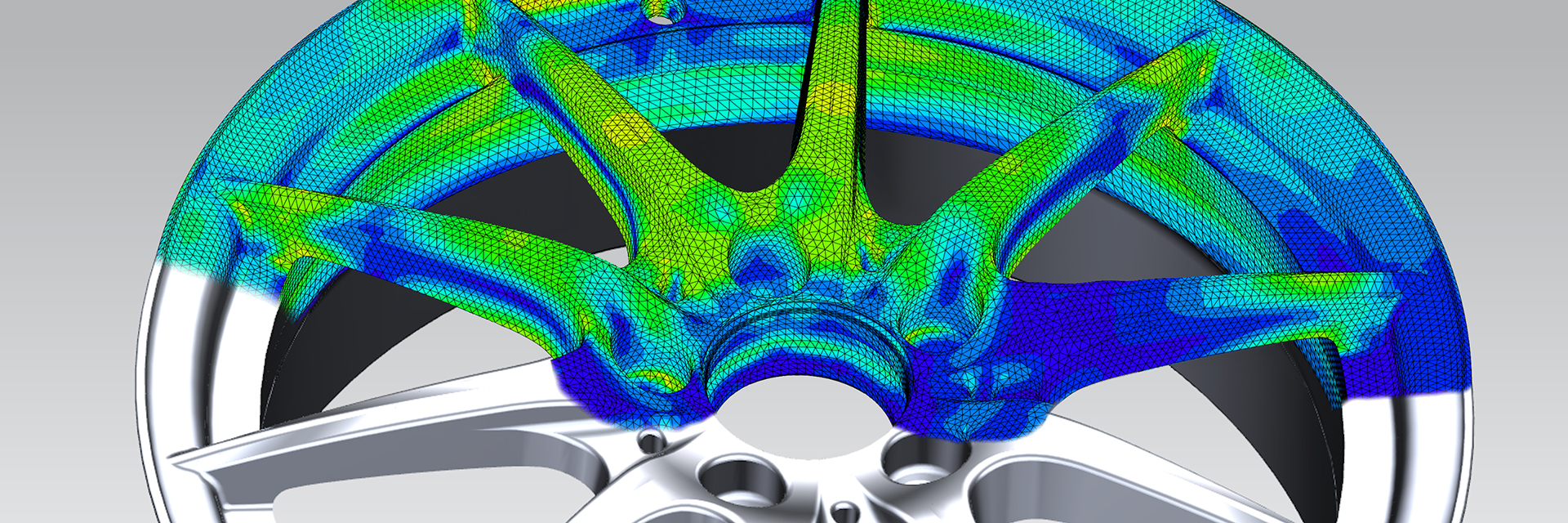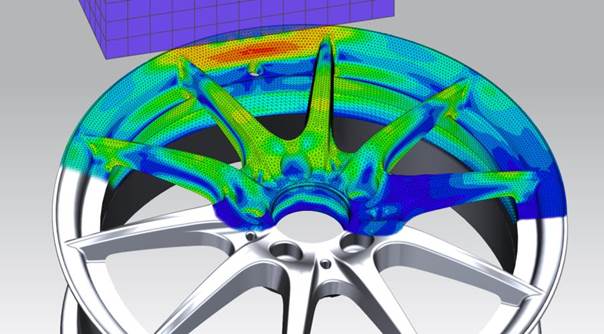Finite element simulations
Structural mechanics finite element simulations of components and assemblies.
Simulation is an effective tool for assessing the suitability of certain concepts or variants relatively early on in the product development process. The entire behaviour of a component (or assembly) can be accessed by the simulation: the structural mechanics, the thermal, the fluid mechanical and also the electromechanical or chemical behaviour, or any combinations of these fields. However, the objective of simulation is never to map every detail of the component behaviour as closely to reality as possible. Rather, it is about getting as efficient a statement as possible at a level of accuracy sufficient for the application.
At the centre are finite element simulations (FE analyses, computational structural mechanics simulations (CSM)), but computational fluid dynamics simulations (CFD) are carried out as well. With regard to FE simulations, non-linear tasks are dealt with above all, alongside linear structural mechanics and/or thermal calculations. Such non-linearities occur, for example, in elastic-plastic or viscoelastic material behaviours, for large deformation, when pairing multiple fields (thermo-electro-mechanical behaviour, etc.) or when incorporating damage mechanisms and fracture behaviour.
A simulation by itself, however, does not offer any benefit. Only once the simulation is validated, i.e. its results have been successfully compared with measurements, does it bring the added value required. Simulation is therefore very closely linked to experiments. The Institute of Product and Production Engineering has an advantage in its diverse experimental infrastructure for mechanical component testing and materials analysis. It can measure, for example, a failure load, a natural frequency, or a force-displacement profile of a deformation process very easily, and thus validate FE results.
The Institute of Product and Production Engineering primarily uses the FE programmes NX Nastran, ADINA, ABAQUS and ANSYS.
Contact: Prof. Dr. Jürg Küffer
Prof. Dr. Hans-Peter Gröbelbauer, +41 56 202 74 46, hanspeter.groebelbauer@fhnw.ch
Prof. Dr. Kaspar Löffel, +41 56 202 85 64, kaspar.loeffel@fhnw.ch


